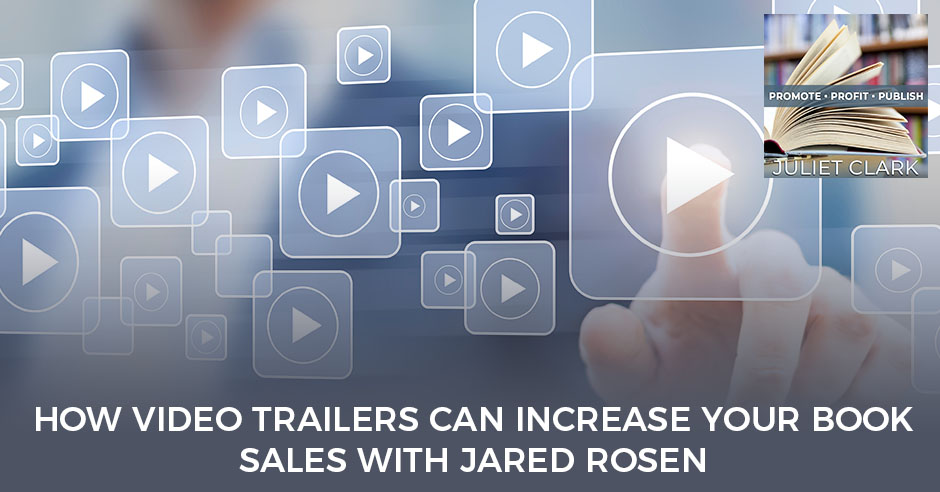
How can you make your book stand out? By hooking people’s attention with emotionally dazzling video trailers. Juliet Clark’s guest in this episode is Jared Rosen, the founder of DreamSculpt. Jared has published over 50 media-enhanced eBooks for many bestselling authors and filmmakers. Today, he’s helping you increase exposure for your book in an authentic and distinct way. Join in the conversation as Jared and Juliet discuss how people value emotion in the artistic world. When making video trailers for your book, don’t focus on driving sales. Instead, concentrate on the emotion, art, and movement. It has to hook your audience enough to make them want to join your community. Want more valuable strategies? Tune in!
—
Watch the episode here
Listen to the podcast here
How Video Trailers Can Increase Your Book Sales With Jared Rosen
We have a repeat guest on this episode that’s going to then talk about some things going on in the publishing world that are helpful for you. Before we get started, don’t forget to take our Promote, Profit, Publish Quiz. You can find it at www.PromoteProfitPublishQuiz.com. Find out if you’re ready to publish that book because writing it, wasn’t the hard part. Publishing it isn’t the hard part. It’s the marketing. Make sure before you get started and get into all of that, you have a plan. As Jared and I were talking about, that you have a budget.
Our guest is Jared Rosen. You have heard him before. Jared’s the Founder of DreamSculpt as an innovator in digital media publishing. He’s published over 50 media-enhanced eBooks for many bestselling authors, filmmakers and has dozens of books in print. Jared is the author of three books, including the groundbreaking book, The Flip. As a thought-leader, he has presented in venues ranging from TEDx Malibu to McKinsey & Company in Sydney, Australia. In 2000, Jared co-created the Children’s Emotional Literacy Project endorsed by Mayor Richard Riordan and Norman Lear. Welcome.
Thank you for having me. Always good to see you.
It’s good to see you, too. I’m excited to talk to you. We’ve had shows on the press releases in the past, but the conversion that we get on those press releases comes from the videos, the book trailers that you make. Tell us about those.
It’s interesting. Years ago, it was probably maybe 2008, 2009, I was looking at a search inside on Amazon. I said to myself, “If I was buying a book, would it make a difference if I could see the first chapter?” The first chapter is not going to give you an overall experience with the book is, so I said, “It would be great if there was a 30 or 40-second video there on Amazon that could give you an experience of the book.” There’s a takeaway. Like, “If I buy the book, I’ll get even more out of that.”
What we had done from 2010 to practically 2017, was media enhanced eBooks. We put videos into it, so when people flipped it, the videos were playing. What I saw happening was everyone on social media doesn’t want to click onto another browser, whether you’re on Instagram or Facebook, you’re scrolling and seeing auto-playing videos.
We shift to the auto-playing videos to capture somebody right there. What I always look for is you can say that their book trailers, that’s one way to call it a trailer. In many cases, if you’re watching a trailer to a movie, it is basically trying to sell you the movie. Imagine a book trailer would be trying to sell you the book. The way I see it very differently is if somebody is scrolling on social media and a video is auto-playing first, you have to grab them. It needs to be dazzling. The whole idea of doing and many people do this successfully, especially if they’re well known, like a Facebook Live or where they’re speaking, it’s very flat.

Video Trailers: Imagine a book trailer trying to sell your book.
After 30 seconds or less than that, people get bored. I came to the idea that we’d create a very lively using all moving images experience in 30 seconds. What came to me was something that’s going to give them value. One of the first books I did, like this, was a book about healthy feet called the Whole Foot Revolution. We published the book and when I was trying to figure out what we do with the video, I saw one thing that was interesting.
That is when you walk barefoot on the Earth, your bones are like batteries. They absorb this charge from the Earth. I said, “That’s what we do in the video.” Thirty seconds, somebody watches that video. They’re like, “I should go outside and walk barefoot.” Everything that we’re doing in the video is to give somebody some experience, knowledge, wisdom and, of course, lead them to something else, which most likely is the book or something relative to the book.
You guys, when you’re publishing a book, be sure you have your Author Central account set up. What’s cool about this is, these videos can be put right into the Author Central account, which means that if you see the book and you click on the author, you can go right in the bio headshot video. You can see that video trailer of the book and find out a little bit more about it as well. You did one for Karie Cassell. If you guys want to go see it, it’s over on TheDominoDiet.com. Talk about when you put that together. Where are you going for something emotional? What were you trying to do there because people were impressed by that video?
To be honest with you, it’s always emotional. That’s how people function, especially on social media. The question is, is it manipulative, emotional, especially something relative to a diet or is this something that’s going to give them a piece of knowledge even in 30 seconds like an a-ha. That’s what we were looking for in that video. They’re very sequenced of The Domino’s. The domino that I illustrated and giving people a visual experience of that on the video gives them the knowledge that they need. It’s always about, when I work with somebody, “What’s the takeaway?”
Let’s look at a 30-second video. It’s probably because we’re using captions and that’s the most important thing. It’s not only to have a voice because in the circumstances, especially in social media, but people also don’t even turn on the audio sometimes. It’s extremely important to have the cap and stuff. When we sketch it out, what is the video going to be? We start with, maybe there are only 50 words in the caption’s maximum for the clips. The sequence of those, if you read the captions, it would be knowledge, wisdom and something that you’ll have an a-ha with.
Once we do that, we come in with the video and that’s where it’s emotional. How do you create that if it’s a shot of a person and it looks like that person’s in a deep place or may be struggling with something? It’s a facial expression and with the captions and the facial expression, we use music as well. In the circumstances, we’d use voiceover but it’s about creating an experience in a very short period of time that’s going to pull on an emotion. In her case, it is what people’s focus obviously is their weight and their health. That’s a message that will lead the person to find out more about how this Domino Diet can improve their health.
I feel like the emotional eating piece that you addressed in that as well because so many people came out of COVID with extra pounds from that. Fear of the unknown and that emotional eating piece. We’ve been using these a lot with press releases. You and I have a product together that we do the press release and the videos in it. I want to tell you guys a little bit about that because we’re getting great conversion with those press releases because so many people are invested in video. Can you talk about that a little bit? More about video versus writing or video versus other mediums and how people are responding?
Take a look at Facebook and Instagram. Of course, Facebook now is very similar. When Facebook started, it was a lot about writing. Somebody would attach a video here and there. If you look at Instagram, it’s almost all video. You look at TikTok, it is all a video. It’s how we’re communicating. I still believe very much in the written word and the literary tradition. That’s where we want people to go because we want people to get into a book and read. How do you get people into it?
You can make something more artistic if you’re not focusing on the pitch.
If they’re reading a journal magazine or things where these books are excerpted, then, “I read this magazine and there was an excerpt from this book. I should go to the bookstore and buy the book.” That’s not what’s happening now. What’s happening now is people aren’t going to bookstores. There are very few bonds, novels, barely surviving, borders closed down.
A lot of independent bookstores struggled hard even before the pandemic. If you capture somebody on social media with the video and it’s an experience, once again, that emotional connection is going to lead them to it. With respect to using it in a press release, the same thing is going to happen because we’ve evolved. We want things fast and dazzling. We want movement.
That’s why I’ve noticed that when people do Instagram or Facebook Live when they’re speaking, they’re not on fire. I know for myself I could barely watch a few seconds. Somebody is talking and it’s flat. It’s not moving. That’s the key, is we want to dazzle people. In this day and age, you have to seduce them to something and do it fast and do it with, I believe, with video or media, as opposed to just written words.
That is so true. Remember back when Facebook started, the Facebook Lives? All of the algorithms were around, “How long you could keep people on there.” Same with all of these things. Even LinkedIn is going to LinkedIn Live now, too. The video is big. We’re learning to consume but it goes back to our audience’s exhaustion of that instant gratification. That’s why it’s so important when you make these. How long do they have to be because yours aren’t long?
I’ve done the research. Anything over 30 seconds, it’s got to be mind-blowing for people to watch. Our videos run between 20 and 30 seconds. As I said, there were 50 words if you break down the captions. If you took all the captions and put them together, it’s like a short paragraph. Fifty words is a paragraph, basically. I’m not saying it’s short but it’s a medium-sized paragraph. The words aren’t extremely important. We could do something without any words, any captions. You can do something with music and imagery but it’s a combination because the words, they’re reading them. When there are captions, they’re reading them and still reading.
We want them to read and watch at the same time. It drives it. If there’s music in the background, if they turn on the audio, the music is emotional, the visual experience is emotional. It’s going to reinforce when they’re reading it what that message is. That’s why it’s got to lead to something else. There’s no point in putting in a 20 to 30-second video but if it leads to the book, it probably is not going to be as effective. Of course, for the author, it’s not going to be as effective assuming another wrote the book. It just leads to Amazon, for instance. This funnel approach, where does that video lead to? Take them further and deeper.
Our suggestion is to take them into what we call a funnel. Take them to some landing page where you meet the author. Now, they can have intimacy. Now that you touch them and they took that next step. That’s where the Facebook Live or the talking point video is and those talking points. Once again, it could be very succinct. Your aim is to get their email address because there’s still something that you’re giving them. In a way, we’ve learned how to seduce people but not directly to the sale. That’s the most important thing. The sale is important because we want to sell a book but what’s really important is we want to bring people into our community. The video does it.
With the video in the press releases, it has a different function. A function is for the media to pick up on it. It’s still the same thing’s happening. The videos it’s connecting with them. I would say emotional is extremely important but authentic and emotional because it’s very easy to do something that’s inauthentic and emotional. Most people see through it. It won’t be as effective.

Video Trailers: People don’t even turn on the audio sometimes in social media, so it’s important to have captions.
I always go with authentic. In the video, how can you embrace what caught the audience knowing that the psychographic, the mindset of the audience, how do we embrace that? The videos can be used in various functions. If the video is being used in a professional organizational site, everyone in that professional organization shares something similar. If it’s going up on Facebook and it’s generally around diet, for instance, there are quite a few communities that video would be effective in that specifically deal with people, dealing with health issues and diet.
Here’s where people get confused about the timing of all of this. You’re in book development. Obviously, books come out of the work that people like Jared do into my purview. When would you suggest that people start looking at that video, getting that video in mind, laid out, the idea to you to get it done?
In circumstances where people are, let’s say, doing pre-sales for the book, that’s one thing because that’s probably closer to the launch date of the book. I would say, sooner than later, getting a book cover done, a video and your synopsis. For instance, let’s say you want to be speaking at a conference. There may be a normal application process but let’s say you had a book coming out a year from now. You wrote in the query, “I have a book coming out in a year from now. I’d like to be one of the speakers at your conference.” Great, but if you send them, and you have the synopsis, the book cover, and now you have a video that at the end has a book cover, it says, “Coming in out March 2022,” it’s going to be a lot more impressive.
I would say for most people, once they’re clear, they have the title of the book, they’re in the development of the book. I always say this to all my clients, “You have to have this synchronization of moving parts,” because some people, let’s say they go in self-published like, “I wrote the book and now I’m publishing it.” It’s a ready, fire, aim. It’s like, “What do I do with it now?” In saying, if you want to be in conferences, if there are other vehicles that have a timeline, then you have to see what that timeline is.
I would say using that video sooner than later, it’s going to be valuable. If you’re launching it for a big book launch, then you’ll optimize it in various ways and perform in a much robust way. Before you do that in marketing the book, the video is helpful in setting up various opportunities where there are speaking ops or other opportunities.
I’ll tell you, every one of our October releases is releasing at an event. We have a cybersecurity event, a women’s event and then, a 50 years celebration of the band for USC, the Director. That’s why it’s so important to have these tools in advance. I’m going to give you an example that I know Jared’s aware of both Nan Nelson, and Karie Cassell, put this on their green envelope invitations to go out.
People not only got the invite to the event but there was a link there for them to click on and see not only the book but the launch party and the video to see what the book was about.
There are a lot of different uses and I agree with you on that, Jared. Sooner rather than later, so get it out of development, get the video going. Take it to your publisher with the video. That way, if you want to press release or one of those other things, you’re good to go. We’re not stressing Jared out at the last minute. Like we did with Karie.
People value emotion in the artistic world.
We can do things at the last minute but last-minute usually means other things are not in the right order. I’ve been very methodically and strategic is important. There are a lot of moving parts and synchronization that are needed so that you’re not at the last minute. You’d say, “I should have done this or should have anything.” The one other thing I want to say about using the video that is extraordinarily important is you can pick and choose what you want to focus on from the book in the video.
It’s not like if it was a movie, you may want to have a whole rounded experience and see this trailer like, “I get a sense of what it’s about at least. The general topic is a love story, whatever.” When it comes to a nonfiction book and doing these videos, you can drill down into something and that’s why I’m saying, I brought up the one book we did, the Whole Foot Revolution. There was so much in that book that we could be talking about, healthy feed, all these things. When I found that one thing that I thought was that you could do this now, your lunch break. It’s like, “Instead of having a lunch break in the lunchroom or the cafeteria, wherever it is. Go outside, take your shoes off and walk on the grass.”
If we can find each book something, that’s going to give somebody something to actualize, especially for a nonfiction book. It’s going to be valuable because like, “I should do that.” All of a sudden, you’re outside and say, “I saw that video.” If you saw a video and all it did was tell you everything about the book, why you should buy the book and why it’s a great book, then it’s like watching an ad. Most ads, we don’t go and buy the products. I’m not sure how they work. When you watch television ads, I usually don’t buy any products I see on television that’s because, once again, they’re very manipulative.
It’s interesting even what happened it’s happening because you can make something that’s more artistic if you’re not focusing on the pitch. It’s seeing that now in the world of advertising so that they get it. For instance, it’s progressive, the insurance company. It’s little humorous experiences. In the end, it will say progressive, whatever it is. We’re moving more in those directions. I wanted people to know that you’re not trying to take 30 seconds to try to convince somebody to buy your book. “If you buy this book, then this will happen.”
Give somebody something of value. Something of value that leads to something of value that also, once again, doesn’t cost them anything, then they’ll get to that place. You want their email address in all circumstances. That’s the most valuable thing. For every author I’m talking to, you’re building an authentic community and there are other services and different other events and things that you could be doing once you build that community. If you send them off to Amazon, you’ll never know who bought your book. If you have a $10,000 coaching program or you made $10 on a book but you never know who that person was, that may have bought the $10,000 coaching program.
You’d be lucky to make $10 on a book but what a great example. I came from the advertising world. I worked on a big ad account and I don’t buy anything from TV anymore. The ads are plain vanilla. I remember during COVID, I said to somebody I knew who is part of that world as well like, “What are you guys doing? Where did all the good creative people go?” People are buying on other places now and you have to give value. Can you imagine if you had a TV ad that feel like a drug that gave you some value like, “Be healthy instead of all of the things that this drug will maybe give you a side effect?”
At least they’re real in a way because it’s almost like they’re intentionally the people in the advertising say, “Let’s make this a totally surreal experience,” the music, the lighting it’s like, “This is heaven. By the way, all these things can happen, it could damage to your liver, your heart damage.” In a very soft voice and there’s still floating around.
We know that when you go to a doctor and he says, “You need to be on this drug.” You don’t think about the ad. You think about the fact that the doctor told me to do that. I started out years ago and I’m still an artist in the art world. The arts is making our artistic work emotional. Artistic and emotional is because people value it and that’s the key here.

Video Trailers: If you want to be in conferences that have a timeline, then you have to see what that timeline is.
The same thing when we’re embedding them into press releases because of who’s looking at the press releases and also, distinction. Distinctness is extremely important. When we work with DreamSculpt with titling books, I have this ability sometimes. These titles come to me and I’m like, “There must be another book by that title,” and I look at it. There is no book by that title and nobody has a URL, so think about that. It’s the authentic distinction, emotional dazzling.
If you’re thinking about getting a book, if you have a book idea, Jared, where can they find you because you have a great monthly free call that people can jump onto and some pretty low-cost programs where they can get in, test the waters?
Let’s go direct. If anyone wants to have a session with me because you’re interested and you want to discuss it, and I can find out about your book, just send me an email. I’ll give you my name. I can put it in the chat. It’s, JaredRosen@Mac.com. Check out our videos. We have about twenty of them. There’ll probably be about another ten because we haven’t uploaded. Go to DreamSculpt.com and you will see it’ll say Social Media Video, you click on it and there are about twenty of them that you can watch.
That monthly meeting, get ahold of him about that because you get a lot of information, experts on. He works with Waterside. I’m on there. Jared’s on there. Most of the time, there are a lot of people on there who have some great information for you. It’s a way to find out if you want to do this project. Get in there and listen to some of those calls and find out how much work it’s going to be before you get going. Thank you so much, Jared. I hope people understand how important that book development is because there are some mistakes. We had a show. I believe it was released back in August or July about the mistakes that every first author makes it.
I’d like a copy of that send to people because there are a lot of moving parts. It’s easy to miss one and you have to be extremely methodical and strategic because you’re doing something. If you’re publishing it on your own, that usually many people are involved in publishing other book and they all are experts in the cover, of the experience you want to create. Working with you has been phenomenal because you achieve great results. For the last two authors, hit number one on Amazon. I know that got lots of coverage by the media. I’m so glad that we work together. It’s a team, a team approach.
It is. It takes a village to get a book out. You guys, thank you so much. You know where to get ahold of Jared. I’ll see you soon.
Important Links
- www.PromoteProfitPublishQuiz.com
- Jared Rosen – Previous episode
- DreamSculpt
- The Flip
- Whole Foot Revolution
- Author Central
- TheDominoDiet.com
- JaredRosen@Mac.com
- Social Media Video
About Jared Rosen
 Jared Rosen is the founder Of DreamSculpt. As an innovator in digital media publishing, he has published over 50 media enhanced e-books for many best-selling authors and filmmakers and has published dozens of books in print. Jared is the author of three books including the groundbreaking book The Flip. As a thought leader he has presented in venues ranging from TED X Malibu, to McKinsey and Company, Sydney, Australia. In 2000, Jared co-created the Children’s Emotional Literacy Project endorsed by Mayor Richard Riordan and Norman Lear.
Jared Rosen is the founder Of DreamSculpt. As an innovator in digital media publishing, he has published over 50 media enhanced e-books for many best-selling authors and filmmakers and has published dozens of books in print. Jared is the author of three books including the groundbreaking book The Flip. As a thought leader he has presented in venues ranging from TED X Malibu, to McKinsey and Company, Sydney, Australia. In 2000, Jared co-created the Children’s Emotional Literacy Project endorsed by Mayor Richard Riordan and Norman Lear.
Love the show? Subscribe, rate, review, and share! https://superbrandpublishing.com/podcasts/

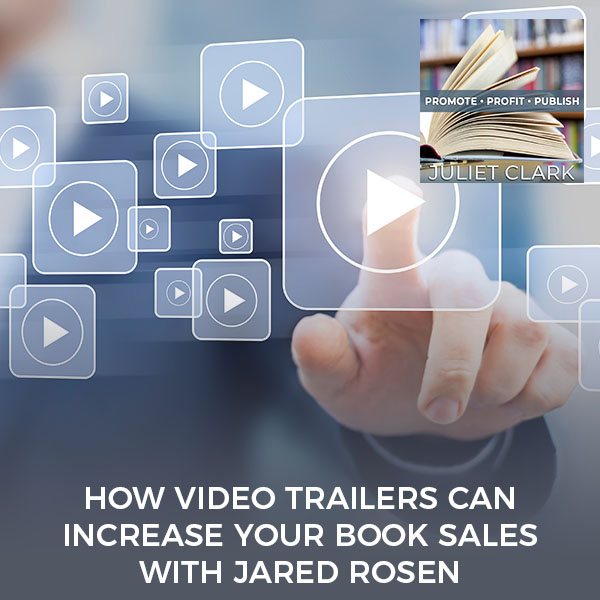


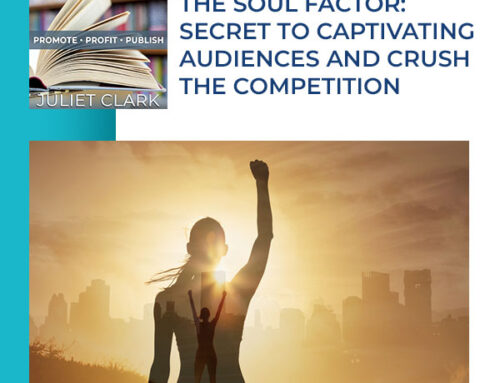
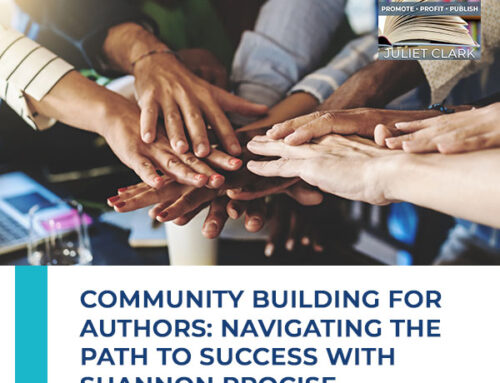
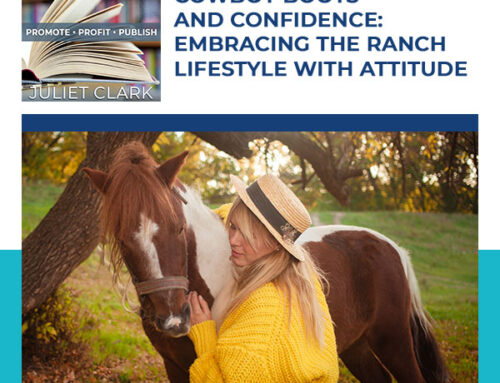


Leave A Comment